The Patriot Hellfire M.2 480GB Review: Phison NVMe Tested
by Billy Tallis on February 10, 2017 8:30 AM ESTMixed Random Read/Write Performance
The mixed random I/O benchmark starts with a pure read test and gradually increases the proportion of writes, finishing with pure writes. The queue depth is 3 for the entire test and each subtest lasts for 3 minutes, for a total test duration of 18 minutes. As with the pure random write test, this test is restricted to a 16GB span of the drive, which is empty save for the 16GB test file.
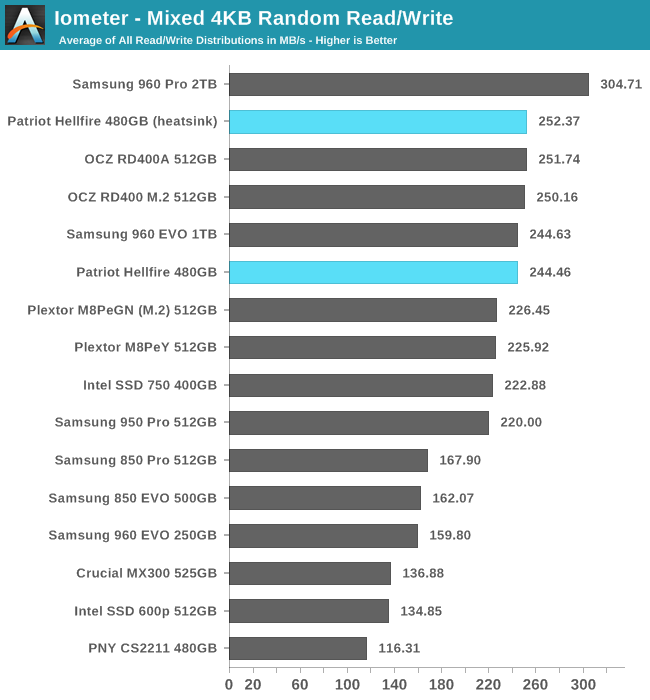
The Patriot Hellfire has great performance on the mixed random I/O test, tying the OCZ RD400 and falling behind only the much larger 2TB Samsung 960 PRO.
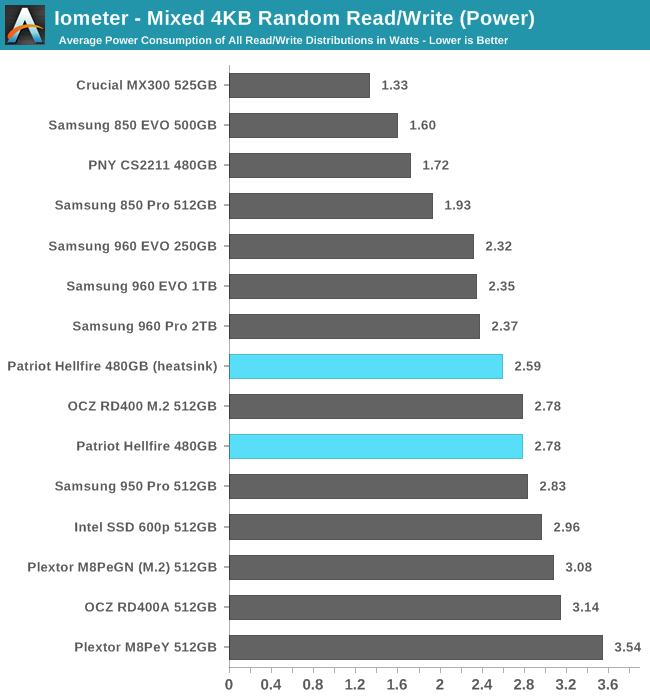
The Patriot Hellfire draws more power than the Samsung drives, but otherwise is one of the most efficient drives on the mixed random I/O test.
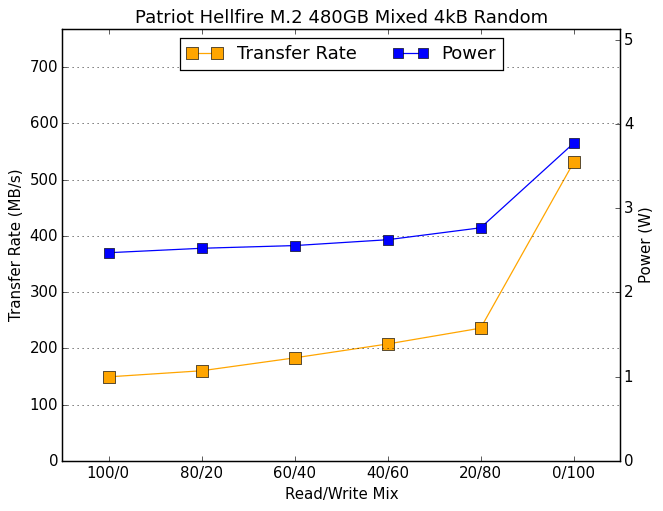 |
|||||||||
Performance increases slowly but steadily as the portion of cacheable writes increases, but the spike in performance when the workload shifts to pure writes is not as big as exhibited by some of the Patriot Hellfire's competitors.
Mixed Sequential Read/Write Performance
The mixed sequential access test covers the entire span of the drive and uses a queue depth of one. It starts with a pure read test and gradually increases the proportion of writes, finishing with pure writes. Each subtest lasts for 3 minutes, for a total test duration of 18 minutes. The drive is filled before the test starts.
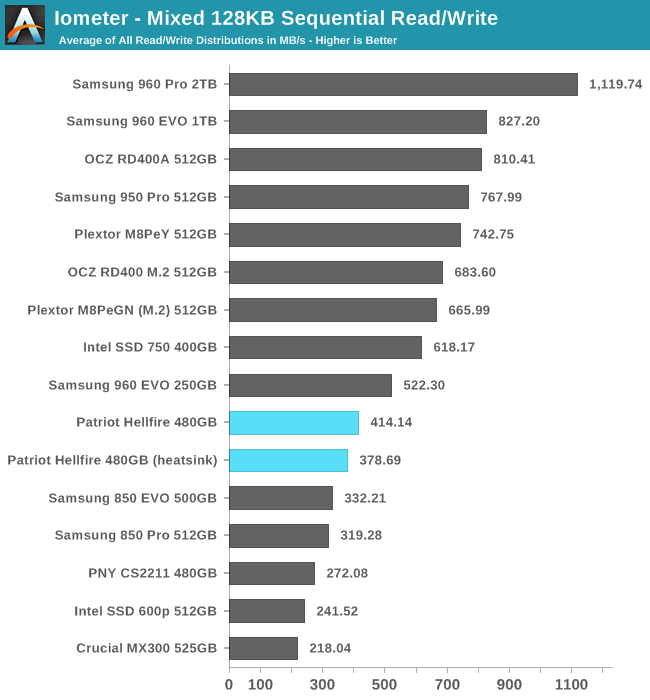
The Patriot Hellfire turns in the second-worst performance from a PCIe SSD, but at least it is still clearly faster than any SATA SSD. Even the 250GB Samsung 960 EVO fares better. This test is another sign that the Patriot Hellfire does poorly when full.
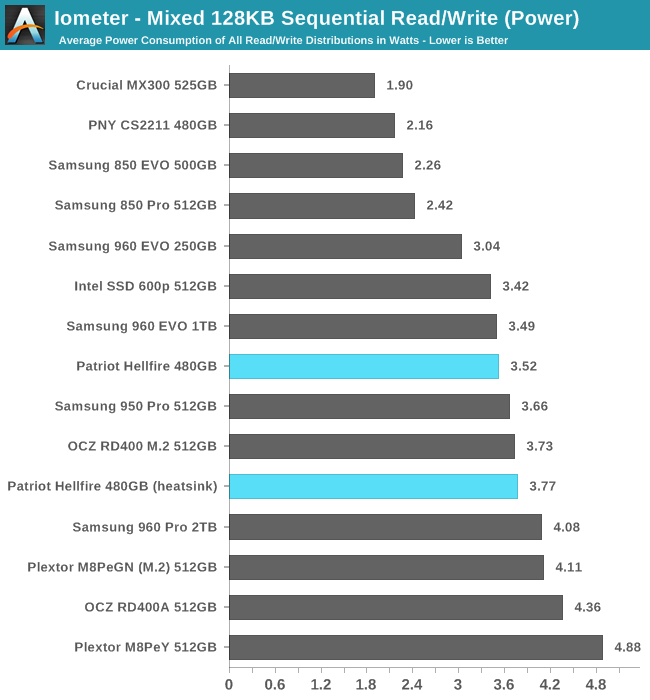
The Hellfire's power consumption across the mixed sequential I/O test is about average for an NVMe SSD, so its overall efficiency is fairly poor.
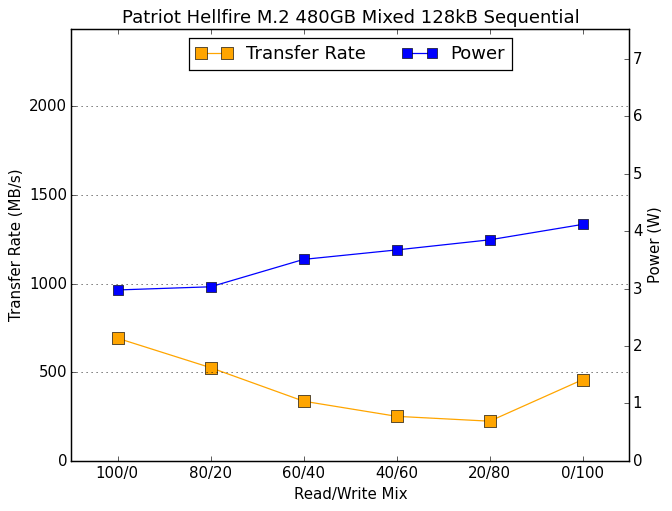 |
|||||||||
The addition of a heatsink only slightly improves the minimum performance of the Patriot Hellfire across the mixed sequential I/O test, and actually led to slightly reduced performance overall.










43 Comments
View All Comments
BrokenCrayons - Tuesday, February 14, 2017 - link
Or Ripjaws...ugh where's my dentist at? It must work or at least not hurt sales too much if companies haven't stopped doing it yet. In fact, it's probably less about the name and more about product differentiation. Everyone sells a NVMe SSD but only one company sells a Hellfire NVMe SSD. Everyone sells a 32GB dual channel 3000MHz DDR4 kit but only one company sells a Viper version thereof for instance. Doing so, even with a relatively stupid name, leads to better brand recognition among consumers and we all know based on our experiences reading peoples' comments about computer hardware, cars, staplers, and energy drinks how important building brand loyalty becomes for those customers that can be sucked into the marketing.MR_Roberto - Monday, February 27, 2017 - link
Wait... so the ASUS Z97 Pro has NVMe M.2 PCIe 3 x4 ? .... I thought the motherbaord was limited to a M.2 PCIe 2x4 "2000 MB/max"........ because I have a ASUS Z97 PRO" wifi" and these means I can get a M.2 card /o/ , I was afraid my m.2 slot was limited and uselessUser11bfw - Saturday, July 28, 2018 - link
For no civic product „Hellfire“ is a reasonable name. Using the association with a deadly weapon exhibits a disgusting taste.